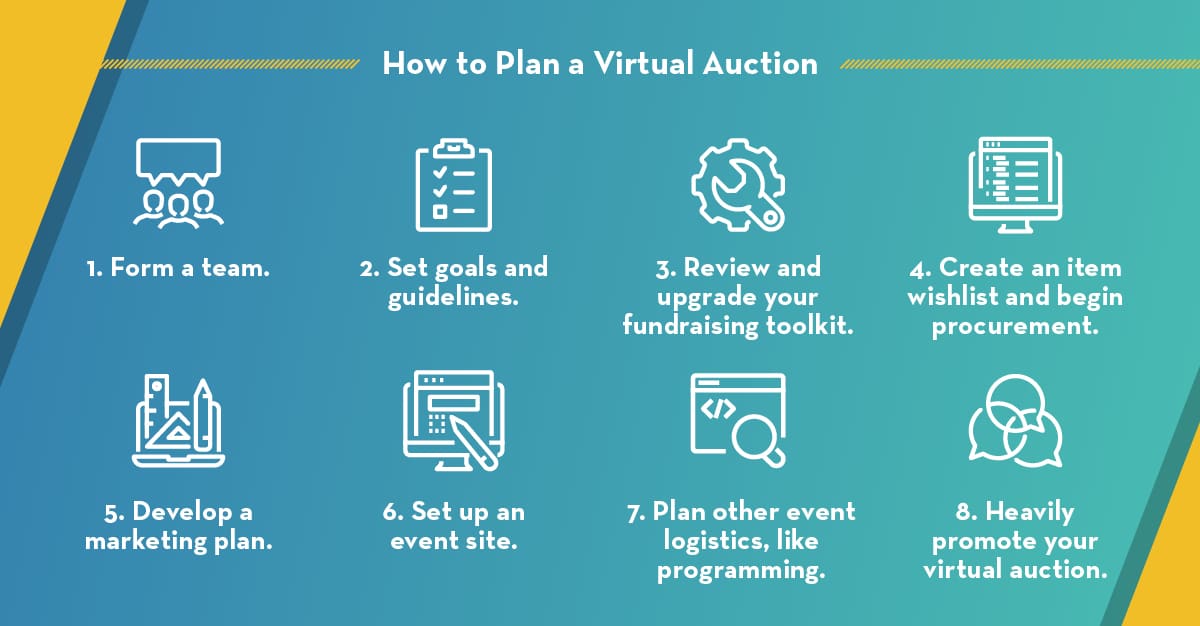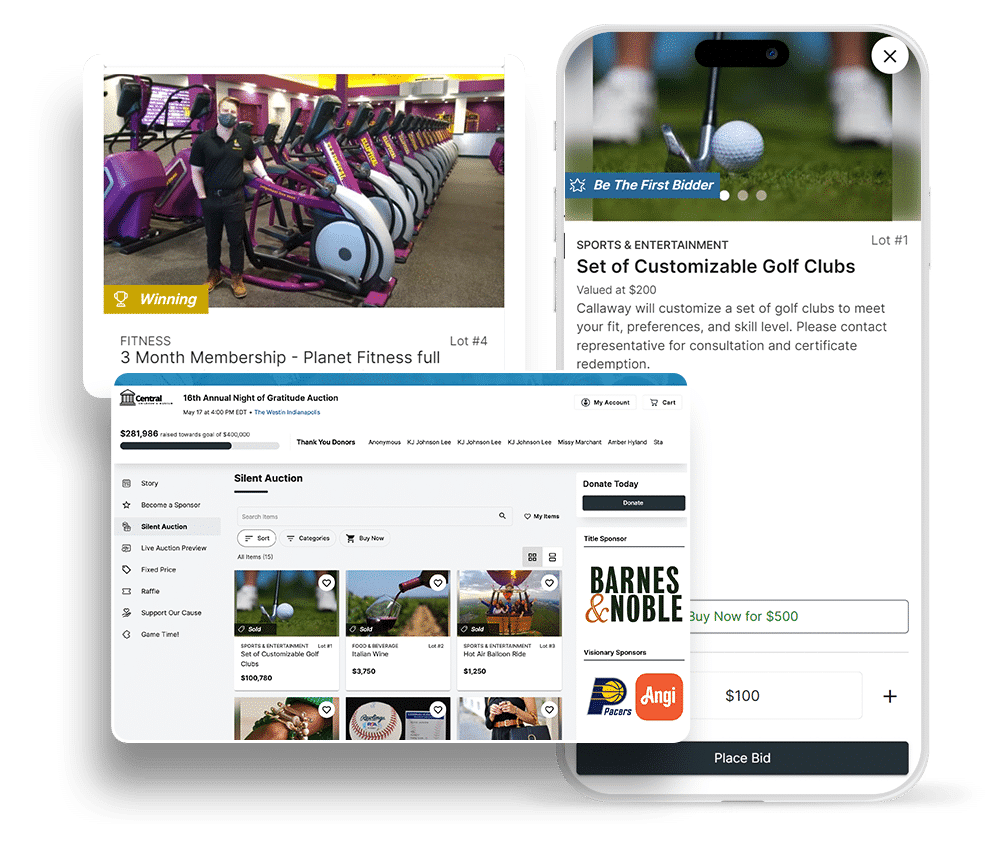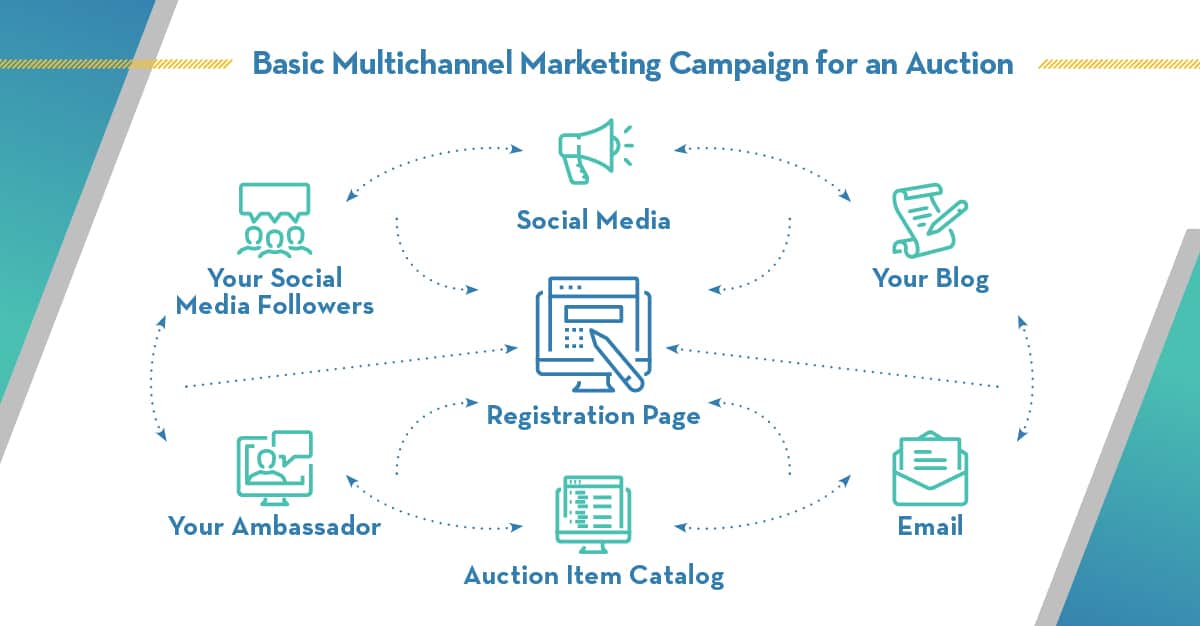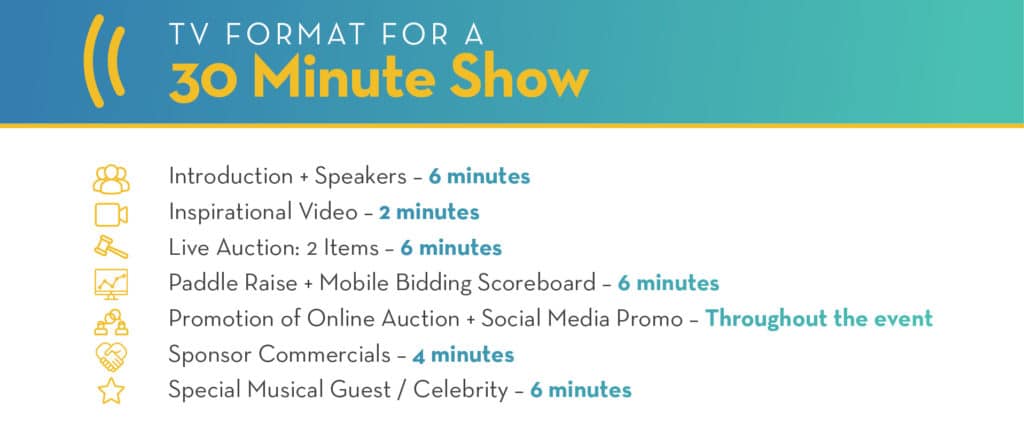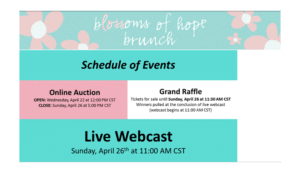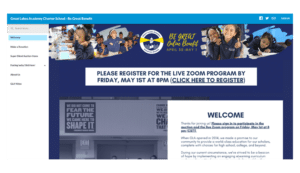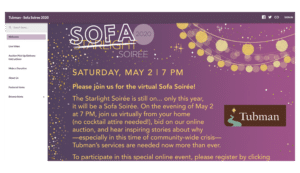How to Plan & Host a Virtual Auction: Full Nonprofit Guide
Nonprofits of all shapes and sizes recognize the value of adding virtual auctions to their fundraising toolkits.
Why? Making your fundraising events virtual can give you added flexibility, help you reach broader audiences, and ultimately raise more than you might with other types of events. Plus, they’re simply exciting! After all, the chance to walk away with an amazing item while also supporting a worthy cause spurs plenty of engagement.
Even better, virtual auction software makes planning one of these events easier than ever. As we’ll explain, OneCause has everything you need to plan and launch an incredible virtual experience.
Before exploring specific software, you need to understand how these events work to lay out your planning roadmap. This complete guide to virtual auctions will cover:
What is a Virtual Auction Event?
Let’s start with the essentials: What is a virtual auction?
A virtual auction brings elements of an in-person auction to an online format.
These events can take many forms, often combining online auction components, live-streamed event programs, gamification strategies, and other engagement-boosting techniques. When powered by the right fundraising software, virtual auctions make it easy to incite giving, create community, and push your mission forward while connecting with far-flung audiences.
Virtual auctions can range from complex virtual galas to simpler online bidding events. Once you understand the essentials of planning one, you can adapt the core steps to suit your unique goals and audience.
Additional FAQs about Virtual Auction Fundraisers
| How do virtual auctions work? | Virtual auctions work similarly to in-person auctions. Setting goals, collecting auction items, creating an event marketing plan, building an event program (that includes your virtual auction), and promoting your virtual auction are all essential steps. The difference? All interactions, programming, and transactions occur online. |
| What are the benefits of virtual auctions? | Virtual auctions support larger audiences since you’re not limited to a certain number of tickets at a specific location. You can also typically plan them for lower costs without a venue and other overhead expenses. These events are flexible and adaptable to your mission, community, and goals. |
| Do donors like virtual auctions? | Yes! The nice thing about virtual auctions is that you meet your donors where they are. You can offer a more streamlined, convenient bidding experience that keeps the energy up, delivers immediate notifications to bidders, and provides a one-stop shop for all bidding on your fundraising site. |
| What will you need to host a virtual auction? | Like other auctions, you’ll need a catalog of auction items, a way to facilitate bids, a plan for promoting the event, and a plan for following up afterward. However, technology will also play an integral role—we’ll review the key parts of a virtual auction toolkit below. |
Essential Tools for Planning and Hosting Virtual Auctions
When planning your first virtual auction and choosing technology, it can be tough to know where to start. Here are some of the most important tools you’ll need to plan and host a virtual auction:
- Virtual auction software, including mobile bidding tools
- Working with virtual fundraising software provides a more streamlined experience for your team and a more enjoyable event for your donors. Rather than piecing together a virtual auction using separate tools, dedicated virtual fundraising software can serve as the central hub for your event.
- Mobile bidding tools are a must for virtual fundraising events that include online auctions. Look for auction software that makes it easy for attendees to engage with the event and place bids from any device.
- Live streaming software
- Live video feeds enable direct engagement with donors during virtual events. Any virtual fundraising event can be improved with live-streamed festivities or appeals, so explore your software options early. Don’t forget the cameras, too!
- Platforms like Zoom can work for small-scale virtual gatherings, but keep in mind that requiring donors to navigate between multiple confusing platforms can harm their experience and your fundraising results.
- Larger events will benefit from a more immersive, branded live-streaming experience. Comprehensive virtual fundraising software (like OneCause) includes built-in live-streaming capabilities that simplify the entire process for you and your supporters.
- Event marketing tools
- Marketing and promotion are key to getting guests registered and excited about your virtual auction. Here are a few tools to help you streamline your marketing plan:
- Sprout Social: Schedule social media posts to be shared on your channels at the most optimal times.
- Wistia: Boost attendee engagement while tracking video performance.
- Canva: Design high-quality graphics to share on social media or marketing materials to be distributed before your big event.
- Using comprehensive fundraising software is generally your best bet. An integrated system that can support your marketing efforts and seamlessly collect registrant data makes everyone’s job easier before, during, and after your auction.
- Marketing and promotion are key to getting guests registered and excited about your virtual auction. Here are a few tools to help you streamline your marketing plan:
- A database or CRM
- Your nonprofit’s database will be essential for planning, hosting, and following up after virtual fundraising events. Use your database to help you research your audience during the planning process, and then ensure all new engagement data is automatically reported throughout your event.
- Ideally, your fundraising software should integrate with your database to simplify data reporting. If direct integrations aren’t available, determine beforehand how to manually export and import data between your tools.
- Matching gift software
- When setting your virtual auction fundraising goals, look beyond direct revenue from winning bids and registration fees. Consider incorporating a corporate philanthropy strategy into your event to raise more for your cause without asking your supporters to donate more.
- More and more nonprofits today secure bonus corporate funds through matching gift programs. In your registration process, include a matching gift database so your donors can look up their employers’ matching gift programs and submission steps to request additional funding for your nonprofit.
How to Plan a Virtual Auction
To plan a virtual auction, there are several core steps you should follow:
Step 1: Form a team to execute your virtual auction.
Don’t try to tackle the entire event on your own! Form a team of staff and volunteers and designate specific responsibilities to different team members, similarly to how you would for any other event. These responsibilities could include:
- Technology
- Marketing
- Sponsorships
- Auction item procurement
Step 2: Set goals and guidelines for your virtual auction.
Determine a budget, including any new tech you’ll need, and then specific revenue and engagement goals for your virtual event. Defining these guidelines early in the process will keep your plans focused from start to finish.
In addition to setting monetary goals, you might also use a fundraising event to facilitate other donor engagement goals, such as:
- Acquiring new donors
- Promoting your cause or gaining publicity
- Stewarding existing donors
- Engaging prospective major donors
Step 3: Review and upgrade your virtual auction fundraising toolkit.
For your first virtual fundraising event, you’ll need to invest in new software to help plan, host, and facilitate it. To understand the full range of functionalities to look for, test drive the OneCause virtual fundraising suite of products:
If you’ve already hosted one or more virtual events, take some time to review your toolkit and fill any gaps. Consider how past events went and where you experienced hiccups or challenging workflows, then find solutions to address them.
Step 4: Create an item wish list and begin virtual auction item procurement.
Your virtual auction can only be as successful as the quality of its auction items.
While there’s no secret formula to procuring the perfect auction items for your event, you can follow several best practices. Consider these key tips:
- Consider your target audience. What will supporters be interested in? How much can they generally afford to bid? What shared interests or lifestyle factors bring them together to support your mission?
- Review your past auctions’ performance. With online auction software, data from previous events will be invaluable for guiding your procurement process. What types of items were popular? What types of items only received a few bids? Use this data to procure better items for your guests.
- Use donation request letters. Using donation request letters when soliciting items for your auctions will save your team time, provide a solid framework to expand on, and simplify the in-kind donation process.
- Get creative! Your offerings should be unique and interesting to draw as much attention and competition as possible. Get creative with your procurement team to find offerings that will really catch your donors’ attention!
Step 5: Develop a plan to market your virtual auction.
For your auction to succeed, people need to register! Marketing your virtual auction will be essential for a few reasons. Effective promotions help with:
- Inviting supporters to your auction
- Securing early registrations
- Promoting your auction items
- Generating excitement and competition
Marketing is crucial for any type of auction—live, silent, or virtual. For online auctions, digital promotions are especially important to compensate for the lack of in-person engagement and reach wider audiences to drive more bids. We recommend taking a multichannel approach to marketing your auction.
Here’s how it might work:
The main idea of a multichannel marketing campaign is to use each of your digital outlets to drive more traffic to one another and to your target action—in this case, your auction’s registration page. Use channels like social media, your website, email, your online item catalog, and volunteer ambassadors and followers to help spread the word.
Step 6: Set up your online auction site.
Your online fundraising site will serve as your fundraising headquarters and your “virtual venue.” Once you’ve picked your virtual auction software, start building your site. Make sure to include:
- Custom pages. Create unlimited custom fundraising and informational pages specific to your event and mission.
- Fundraising drivers. Highlight your auction catalog, donation appeal, and fixed-priced items (raffles, parties, merchandise) on your site.
- Virtual auction items. Track, manage, and package your auction items in an intuitive online catalog.
- High-quality visuals. Bring your event to life online with graphics that communicate your theme and mission.
- Social media integrations. Maximize your reach and communicate your cause on social channels to grab even more attention.
Check out our real-life virtual auction examples below to see these best practices in action on virtual event websites.
Step 7: Plan other auction event logistics, like programming.
A live-streamed program might perfectly complement your virtual auction to encourage bidding and bring your community together. For larger-scale virtual events, thoughtful programming will be vital.
Design your event program just like you would a normal in-person gala; just tweak for virtual adjustments in a punchier, attention-retaining format.
We’ve found a shorter program holds donors’ attention better than a typical 2-hour gala event. Here’s an example run-of-show that we’ve seen work well for online events that include virtual auctions:
Get creative to develop the right schedule for your event—just be mindful of timing and attention. Give donors plenty of time to engage with your live auction portions and create multiple opportunities for engagement and fundraising.
Step 8: Heavily promote your virtual auction.
For your virtual event to succeed, it has to stand out online. Now’s the time to put your marketing plan into action! Ensure that your supporters know about your event, how to sign up, and what to expect on the big day. Get them excited with promotions via email, social media, and peer-to-peer tactics.
How to Host a Virtual Auction
Now your virtual auction day is here! Let’s walk through the steps and best practices for hosting your auction once you’ve planned it.
Step 1: Drive early registration.
A seamless registration process will start your event on the right foot.
Robust online auction software will simplify and streamline the entire registration process from start to finish. By using mobile technology, your organization can:
- Assign bid numbers. Automatically assign bidders numbers in the platform to ensure things run smoothly when it’s time for the auction.
- Pre-register credit cards. Encourage guests to pre-register their credit cards on your auction site or at check-in. It will significantly expedite checkout—you’ll thank yourself later!
Step 2: Clearly define day-of roles.
Most importantly in a virtual world, have a staff member on hand to answer questions and troubleshoot tech challenges. Delegate a person (or a few people) to tackle specific aspects of your event, such as:
- Sponsorships
- Marketing and promotions
- Ticket sales or registration
- Major donor involvement
- Auction item procurement
- Event follow-up
- Delivery of auction items
Step 3: Start the bidding early.
One of the smartest strategies you can implement in your virtual auction is pre-bidding. Pre-bidding allows you to jumpstart your fundraising, build excitement for your main event, and extend the life of your auction!
Follow these top tips to set your team up for success:
- Set parameters. Clearly define the exact date and time at which silent auction pre-bidding will become available on your online auction site.
- Prepare an email blast. Amp up the excitement for pre-bidding with an email communication before the online auction is published. Include the URL of your mobile-friendly catalog so they can start bidding from their smartphones right away.
- Communicate the benefits. It’s simple! Let your guests know they can get a leg up on the competition. Pre-bidding allows your attendees to walk into an event with bids already on the table.
- Don’t show all your cards. You don’t need to release all of your items for pre-bidding – you’re trying to build suspense, not take it away. Stagger in items to maintain bidding momentum and keep people coming back to bid!
Step 4: Use live streaming and multimedia.
Live streaming works well because it’s an engaging alternative to in-person events that can open up new opportunities for multi-channel engagement with supporters.
With the right recipe of virtual storytelling, energy, mission moments, and fun, live streaming your fundraising event can be very effective (not to mention the exponentially greater donor reach than in-person).
The most popular and accessible options include Facebook Live, Instagram Live, YouTube, and Zoom.
For more on how to use live streaming in your next virtual auction, head to this guide.
Step 5: Engage directly with bidders with text notifications.
When you don’t have everyone in the same room, it’s tough to control the distractions around your donors. However, your virtual fundraising software will likely include text notifications.
Virtual auction software enables you to instantly notify participants of changes or announcements. This is huge for boosting engagement. After all, how many times a day do you look at your phone because it buzzed?
Typical reasons for sending notifications include:
- Outbid notifications. Notify participants that they’ve been outbid on an item, encouraging them to immediately jump in and up their own bid.
- Fundraising announcements. Share announcements about deadlines, like when there’s only one day or one hour left to place final bids on their favorite items.
- Additional offerings. Promote additional offerings in your online auction, like buy-it-now options for items or extra raffle tickets.
- Energy boost. Up the energy by directing participants to hot items or drawing attention to items that haven’t received many bids yet.
Text messaging is the perfect feature for online auctions because it gets guests back on their mobile devices and back to bidding!
Step 6: Streamline event close and check out.
With online auction software, you can greatly simplify the closing logistics of your event. For example, the right tools will ensure that:
- Guests can check out on their own. If guests have pre-registered their credit cards, checkout should be as easy as pie. Attendees should automatically be charged if they win.
- Guests are quickly matched with their items. With instant access to auction transactions, you can easily determine who won each item.
- Auction item winner data is recorded. Virtual auction software automatically records each item winner’s name and winning bid amount for easy future reference.
Step 7: Have a plan for packaging and shipping items.
Time to close out and ship your items off to their lucky winners. Be sure to ship the item to the winning bidder in a timely manner.
When packaging items, take care to:
- Package all items securely. Take time to package your items to prevent any damage. This will save you and the winners the heartache of refunds and broken items.
- Say thank you. Include a thank-you note to show donors you truly value them—not just for their money but also for their generosity and support.
- Give them more information. Let your auction item winners know exactly how their donation will be used to power your mission. Have another event coming up? Let them know the details and include a link to register.
Step 8: Immediately follow up with all donors to say thank you.
After any fundraising event, following up is critical. Express your gratitude to everyone who attended and donated, then begin studying your engagement data to find ways to improve your next virtual event!
If you use OneCause auction software, the automated thank-you process gives you more time to breathe and handle other tasks. After guests check out, they’ll receive an email receipt with information about items they won and a special thank-you from your organization.
When your nonprofit is consistent in its gratitude, outreach, and engagement, your supporter relationships will blossom.
Step 9: Study your performance data.
The last crucial best practice for any nonprofit is to track your performance! After your virtual auction, gather your team and answer these questions:
- How did turnout compare to our goals or expectations?
- Did we reach our fundraising goal?
- Which items were the most popular?
- Did any items not receive bids?
- Who were the top bidders?
- What could we do better next time?
The good news is online auction software has your answers! Robust online auction software from OneCause allows you to generate a wide variety of reports that will give you detailed insights into your auction items and bidders.
When you learn more from your past events, you can continually host better, more effective auctions in the future.
Real Virtual Auction Examples and Successes
Diving headfirst into the world of virtual fundraising can seem daunting when all you’ve done in the past is traditional in-person fundraising. It’s easier to confidently make the leap when you see others have done so successfully.
We’ve gathered a few of our top OneCause Success Stories to spark inspiration for your online fundraising.
When faced with the sudden need to pivot their annual event to occur online, Zoo Miami worked with OneCause to quickly plan a stellar virtual fundraising event, complete with an auction and engaging program.
The results? More than 700 attendees and fundraising revenue 327% greater than the previous year’s event!
Crohn’s and Colitis Foundation of New England used OneCause fundraising tools to plan and launch an incredible virtual gala and auction on short notice.
The results? A total of $107,429 raised from more than 300 registrants!

How OneCause Can Help
In addition to in-person auction tools, OneCause offers a comprehensive virtual fundraising solution that can save you time, provide a better experience for donors, and ultimately help you raise more.
A virtual auction powered by virtual fundraising software is the perfect opportunity to engage with broad online audiences and grow your mission’s visibility while raising support. The flexibility and cost-effectiveness of these events make them a no-brainer for many organizations.
The world of fundraising has gone online, and we can help! Take a test drive to experience our industry-leading fundraising tools for yourself.
Wrapping Up
Still curious about virtual events and fundraising best practices? We’ve got your back. Here are some additional resources to make sure your next virtual event is seamless:
- Virtual Fundraising Events: Complete Guide for Nonprofits. Discover how you can take your virtual fundraising to the next level with engaging theme ideas, success stories, and more.
- How The High Museum Raised 400K In Their Virtual Wine Auction. Check out this success story to learn how the High Museum found success with OneCause.
- 100+ Irresistible Silent Auction Item Ideas to Maximize Bids. In need of fresh and impactful virtual fundraising ideas? Check out this blog for 45 innovative ideas!
- How to Plan & Host a Hybrid Fundraiser in 10 Steps. Check out these easy steps to host your next hybrid fundraiser.


